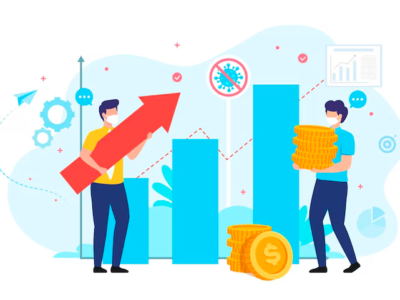
The rapid advancement of technology has transformed the financial landscape, bringing forth innovative solutions through Financial Technology, commonly known as FinTech. While FinTech services offer unparalleled convenience and efficiency, the increasing prevalence of cyber threats raises concerns about the security of personal and financial information. In this comprehensive guide, we explore the risks associated with FinTech services and provide practical strategies on how individuals can protect themselves in the digital age.
The Growing Landscape of FinTech
FinTech encompasses a broad range of financial services, from online banking and payment apps to robo-advisors and cryptocurrency platforms. As these services become integral to our daily lives, it is crucial to understand the evolving landscape and the potential vulnerabilities associated with digital financial transactions.
Benefits and Risks of FinTech Services
Before delving into security measures, it’s essential to recognize the benefits and risks of FinTech services. While these technologies offer convenience, speed, and accessibility, they also introduce new avenues for cyber threats, ranging from phishing attacks to sophisticated malware.
4. Understanding Common Threats
Phishing Attacks
Phishing remains a prevalent threat in the digital realm. Cybercriminals often use deceptive emails, messages, or websites to trick individuals into revealing sensitive information such as login credentials or financial details.
Identity Theft
Identity theft involves the unauthorized use of personal information for fraudulent activities. FinTech users must be vigilant against tactics aimed at stealing their identities, such as social engineering and data breaches.
Data Breaches
Data breaches occur when unauthorized parties gain access to sensitive information stored by FinTech platforms. Individuals should be aware of the potential consequences and take steps to mitigate the impact of data breaches on their financial well-being.
Malware and Ransomware
Malicious software (malware) and ransomware pose significant threats to FinTech users. These programs can compromise devices and encrypt files, leading to financial loss and unauthorized access to personal information.
Robust Password Management
Creating strong, unique passwords is a fundamental step in enhancing security. This section provides practical tips on crafting robust passwords that are less susceptible to hacking attempts.
Utilizing Password Managers
Password managers offer a secure and convenient way to manage complex passwords across various accounts. Users can learn how to integrate these tools into their digital security routine for added protection.
Two-Factor Authentication (2FA)
Two-Factor Authentication adds an extra layer of security by requiring users to provide two forms of identification before accessing their accounts. We delve into the importance of enabling 2FA and how users can implement it effectively.
Keeping Software and Devices Updated
Regular updates to operating systems are crucial for addressing security vulnerabilities. Users will learn the importance of keeping their devices’ operating systems up-to-date to minimize the risk of exploitation.
App and Software Updates
FinTech apps and software also require regular updates. This section outlines the significance of updating financial applications promptly to ensure they benefit from the latest security patches.
Regularly Monitoring Financial Transactions
Actively monitoring financial transactions is a proactive measure against unauthorized activities. Users will discover how regular reviews of their account statements can help identify and address potential issues promptly.
Choosing Reputable FinTech Platforms
Before selecting a FinTech platform, users should conduct thorough research and read reviews from reputable sources. This section guides individuals on how to assess the credibility and security features of different services.
Regulatory Compliance
Understanding regulatory compliance is vital for evaluating the legitimacy of FinTech platforms. Users will learn to recognize the importance of platforms adhering to industry regulations to protect their financial interests.
Mobile Devices
Mobile devices are commonly used for FinTech transactions. This section provides tips on securing smartphones and tablets to prevent unauthorized access and protect sensitive financial information.
Computers and Laptops
Securing personal computers and laptops is equally crucial. Users will gain insights into implementing security measures to safeguard their devices against cyber threats.
Online Resources and Courses
Continual education on FinTech security is essential. We explore various online resources and courses that can empower users with the knowledge needed to navigate the digital financial service in Austin landscape safely.
Staying Informed on Security Best Practices
Remaining informed about the latest security best practices is vital for adapting to evolving cyber threats. This section emphasizes the importance of staying vigilant and proactive in the face of emerging risks.
Utilizing Secure Wi-Fi Networks
The security of Wi-Fi networks is pivotal in safeguarding FinTech transactions. Users will discover the significance of using secure and encrypted Wi-Fi connections to prevent unauthorized access to their financial data.








